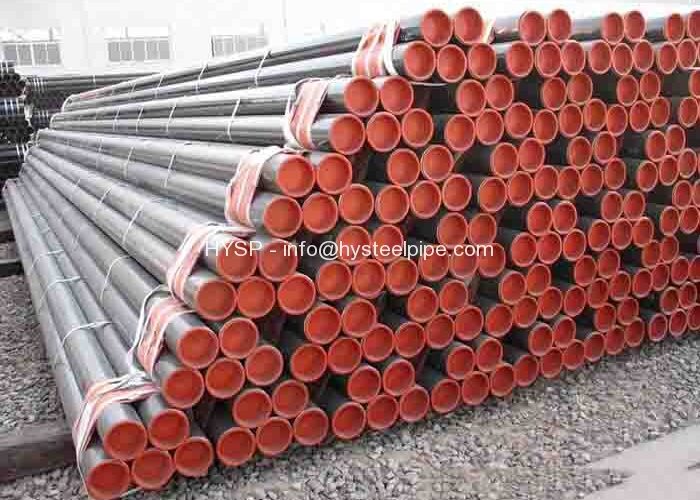What is Charpy V-Notch Test ( CVN Impact Test) ?
What is Charpy V-Notch Test ( CVN Impact Test) ?
Definition of Charpy V-Notch test (CVN Impact Test )
The Charpy V-notch-CVN impact test, also known as the Charpy V-notch test, is a standardized high strain-rate test which determines the amount of energy absorbed by a material during fracture. This absorbed energy is a measure of a given material’s notch toughness and acts as a tool to study temperature-dependent ductile-brittle transition. It is widely applied in industry, since it is easy to prepare and conduct and results can be obtained quickly and cheaply. A disadvantage is that some results are only comparative.[1]
The test was developed around 1900 by S. B. Russell (1898, American) and G. Charpy (1901, French). [2] The test became known as the Charpy test in the early 1900s due to the technical contributions and standardization efforts by Georges Charpy. The test was pivotal in understanding the fracture problems of ships during WWII.[3][4]
Today it is utilized in many industries for testing materials, for example the construction of pressure vessels and bridges to determine how storms will affect the materials used.
Charpy V-notch Impact Testing, History & Process
The origin of some common mechanical testing that we perform today can be traced back to research and discoveries from the 1800s. In that era there was an International Association for Testing Materials that would meet every 2-3 years in various cities around the world. By 1913 it had 2,682 members including such famous names as Brinell (hardness test), Martens (martensite), Heyn (grain size), Bauschinger, Le Chatelier and Charpy (impact test).
Georges Augustin Albert Charpy, a Frenchman, was born in 1865 and graduated from the École Polytechnique in 1887 with an engineering degree majoring in marine artillery. He went on to become a metallurgical engineer and later a professor. Charpy became interested in measuring the impact properties of steel because of the many premature failures of armament, steam boilers and steam engines in that era. He presented a paper to the Association in 1901 on the results of a test for impact resistance of steel using the aid of a pendulum. Charpy also found that the use of a notch in the test specimen was crucial in increasing the sensitivity and reproducibility of the measurement. His name became associated with the Charpy Impact Test for notch toughness because he spent years thoroughly investigating the parameters of the test.
This impact test shows the relationship of ductile to brittle transition in absorbed energy at a series of temperatures. Since iron and all other body-centered cubic metals undergo a transition from ductile behavior at higher temperatures to brittle behavior at lower temperatures, this test is required today for a number of important steel products including steel hull plate for ships, nuclear plant pressure vessels, forgings for electric power plant generator rotors, etc.
The test is performed using several machined bar specimens 1cm x 1cm x 5.5cm with a 2mm deep notch at the middle of a specified flat surface – usually a “V” notch. The specimens are tested at a series of specified temperatures (e.g. -20ºC, -10ºC, 0ºC, +10ºC, +20ºC). Once a specimen reaches the precise temperature, it is quickly placed into a special holder with the notch oriented vertically and toward the origin of impact. The specimen is struck by a “tup” attached to a swinging pendulum of specific design and weight. The specimen breaks at its notched cross-section upon impact, and the upward swing of the pendulum is used to determine the amount of energy absorbed (notch toughness) in the process.
It is still a question if Charpy and others knew about the ductile to brittle transition that occurs with temperature in steel during these early years of impact tests. As far as it is known, all of Charpy’s tests were conducted at room temperature or above. If the ductile to brittle transition was well known in the early 20th century, the steel plates manufactured in 1910 by the steelworks of David Colville in Scotland and used for the RMS Titanic could have been tested at sub-zero temperatures to reveal the brittle behavior that resulted upon impact of the hull plate with an immense iceberg at the icy North Atlantic ocean temperature of -2ºC that fateful night of April 14, 1912. Ignorance of the ductile to brittle transition in steel was again evident in the numerous Liberty ships that literally fractured in half during WW II. The over-stressed steel welds (no post-weld heat treatment) became brittle at icy water temperatures and catastrophic crack propagation took place even when the ships were at dock.
It is interesting to note that the Charpy Impact Test was not issued as a standard test method by ASTM until 1933. It is described in ASTM E23 “Notched Bar Impact Testing of Metallic Materials”.
See more at LabTesting.com
Send Enquiry Now
- 168#, Miao Qian Xi Jie, Yue Xiu District, Guangzhou, China
- ENQUIRY@HYSTEELPIPE.COM
- CONTACT US HERE !
New Products

ASTM A335 Grade P22 Alloy Pipe Steel 3inch SCH120
HYSP supplies high quality ASTM A335 Grade P22 Alloy Pipe Steel and tube 3inch SCH120 for high pressure and temperature applications.
ERW Steel Tubing 12inch ASTM A53 B
HYSP Steel Pipe supply you ERW Steel Tubing 12inch ASTM A53 B SCH40 or API 5L ERW steel pipes for your gas and oil line pipe or water pipes application.
API 5L B ERW Steel Tube OD 426MM
HYSP makes API 5L B ERW Steel Tube OD 426mm x 9.53mm WT DRL for your applications like gas and oil line pipe. we can customize size and steel grade per request.
L235 ERW Pipe EN10224 OD 323.9mm
HYSP steel pipe makes L235 ERW Pipe EN10224 OD323.9mm steel tubes for the conveyance of water and other aqueous liquids. we also produce as required size.

